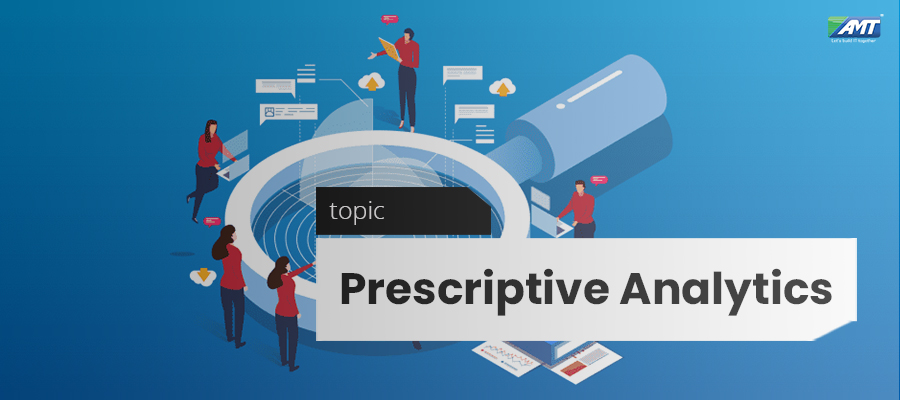Prescriptive analytics is the third and final phase of business analytics, which also includes descriptive and predictive analytics.
Prescriptive analytics incorporates both structured and unstructured data, and uses a combination of advanced analytic techniques and disciplines to predict, prescribe, and adapt. While the term prescriptive analytics was first coined by IBM and later trademarked by Ayata, the underlying concepts have been around for hundreds of years. The technology behind prescriptive analytics synergistically combines hybrid data, business rules with mathematical models and computational models. The data inputs to prescriptive analytics may come from multiple sources: internal, such as inside a corporation; and external, also known as environmental data. The data may be structured, which includes numbers and categories, as well as unstructured data, such as texts, images, sounds, and videos. Unstructured data differs from structured data in that its format varies widely and cannot be stored in traditional relational databases without significant effort at data transformation.[10] More than 80% of the world’s data today is unstructured, according to IBM.
Referred to as the “final frontier of analytic capabilities,” prescriptive analytics entails the application of mathematical and computational sciences and suggests decision options to take advantage of the results of descriptive and predictive analytics. The first stage of business analytics is descriptive analytics, which still accounts for the majority of all business analytics today. Descriptive analytics looks at past performance and understands that performance by mining historical data to look for the reasons behind past success or failure. Most management reporting – such as sales, marketing, operations, and finance – uses this type of post-mortem analysis.
The next phase is predictive analytics. Predictive analytics answers the question what is likely to happen. This is when historical data is combined with rules, algorithms, and occasionally external data to determine the probable future outcome of an event or the likelihood of a situation occurring. The final phase is prescriptive analytics, which goes beyond predicting future outcomes by also suggesting actions to benefit from the predictions and showing the implications of each decision option.
Prescriptive analytics not only anticipates what will happen and when it will happen, but also why it will happen. Further, prescriptive analytics suggests decision options on how to take advantage of a future opportunity or mitigate a future risk and shows the implication of each decision option. Prescriptive analytics can continually take in new data to re-predict and re-prescribe, thus automatically improving prediction accuracy and prescribing better decision options. Prescriptive analytics ingests hybrid data, a combination of structured (numbers, categories) and unstructured data (videos, images, sounds, texts), and business rules to predict what lies ahead and to prescribe how to take advantage of this predicted future without compromising other priorities.
All three phases of analytics can be performed through professional services or technology or a combination. In order to scale, prescriptive analytics technologies need to be adaptive to take into account the growing volume, velocity, and variety of data that most mission critical processes and their environments may produce.
One criticism of prescriptive analytics is that its distinction from predictive analytics is ill-defined and therefore ill-conceived.
Multiple factors are driving healthcare providers to dramatically improve business processes and operations as the United States healthcare industry embarks on the necessary migration from a largely fee-for service, volume-based system to a fee-for-performance, value-based system. Prescriptive analytics is playing a key role to help improve the performance in a number of areas involving various stakeholders: payers, providers and pharmaceutical companies.
Prescriptive analytics can help providers improve effectiveness of their clinical care delivery to the population they manage and in the process achieve better patient satisfaction and retention. Providers can do better population health management by identifying appropriate intervention models for risk stratified population combining data from the in-facility care episodes and home based telehealth.
Prescriptive analytics can also benefit healthcare providers in their capacity planning by using analytics to leverage operational and usage data combined with data of external factors such as economic data, population demographic trends and population health trends, to more accurately plan for future capital investments such as new facilities and equipment utilization as well as understand the trade-offs between adding additional beds and expanding an existing facility versus building a new one.
Prescriptive analytics can help pharmaceutical companies to expedite their drug development by identifying patient cohorts that are most suitable for the clinical trials worldwide – patients who are expected to be compliant and will not drop out of the trial due to complications. Analytics can tell companies how much time and money they can save if they choose one patient cohort in a specific country vs. another.
In provider-payer negotiations, providers can improve their negotiating position with health insurers by developing a robust understanding of future service utilization. By accurately predicting utilization, providers can also better allocate personnel.
The above is a brief about Prescriptive Analytics. Watch this space for more updates on the latest trends in Technology.
